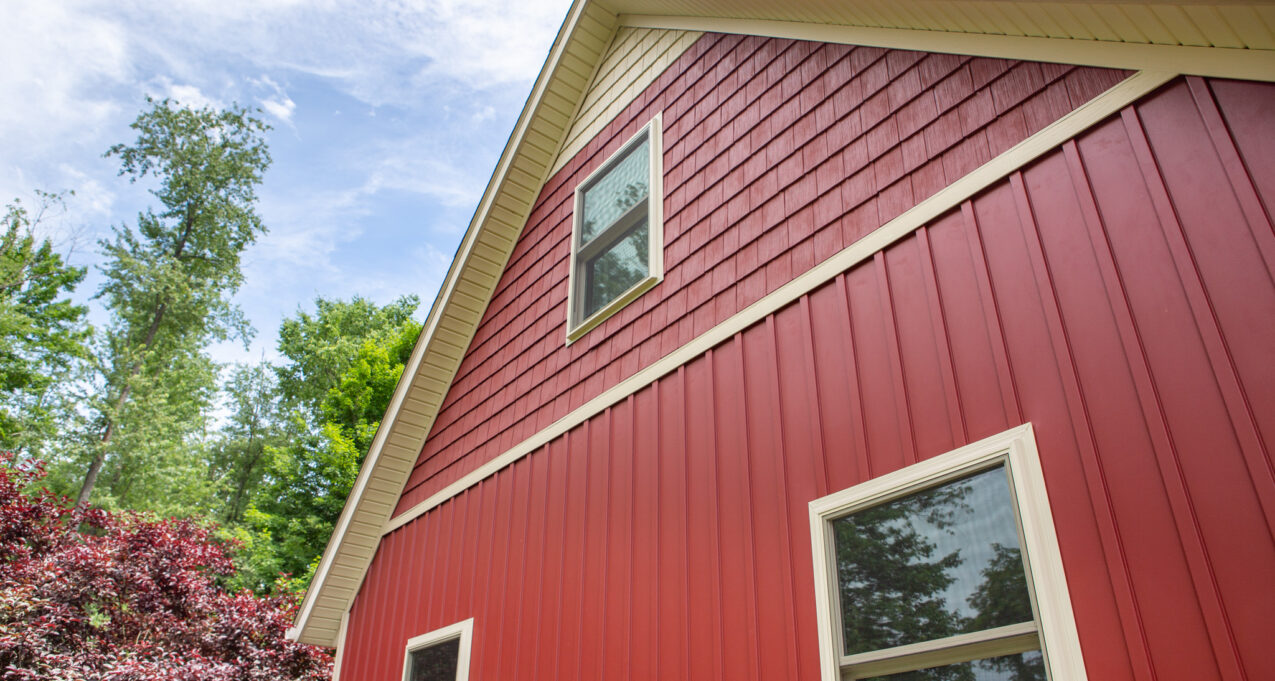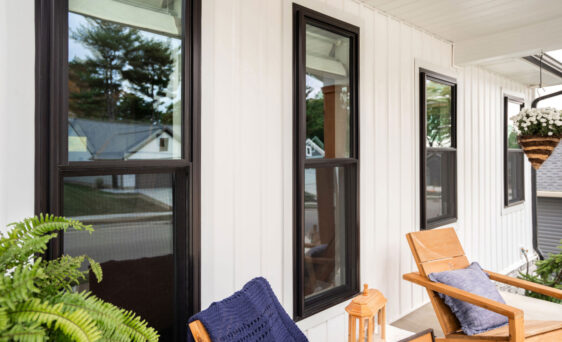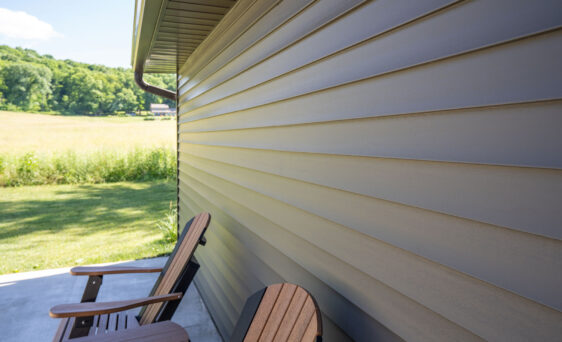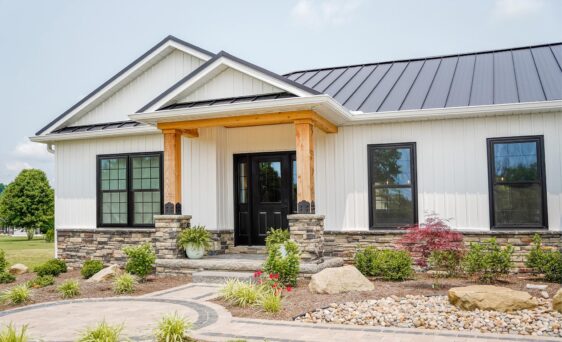Vinyl Siding vs. Fiber Cement Siding: Which is Better?

By James Alpeter
Marketing Manager–Siding, Stone & Roofing

Vinyl Siding vs. Fiber Cement Siding: Which is Better?
For homeowners contemplating replacement of their home siding or a new home construction, material choice is a critical decision that can impact how one feels about their house for years to come.
The most popular home siding material is vinyl siding, which was first introduced in the 1960s and has evolved into a superior exterior cladding material over aluminum siding and other products, with many color choices and styles that can fit the aesthetic of any home. Another house siding material is fiber cement, which is more typically associated as being a replacement for wood.
Vinyl siding didn’t become America’s most popular home siding material by accident; its overall low cost, ease of installation, minimal maintenance and long-term beauty and durability make it a favorite choice among installers and homeowners who would prefer to spend their time and money in other ways.
See what Bob Vila says about vinyl siding vs fiber cement (aka Hardie board).
ProVia’s Super Polymer vinyl siding provides a better alternative to consumer-grade exterior cladding materials, including other brands of vinyl siding and fiber cement (also known as Hardie® Plank or Hardie board).
ProVia’s professional-class, super polymer vinyl siding comes in a number of siding styles and a wide range of colors, making it suitable for homes in any price range. Additionally, ease and lower cost of installation, durability, beauty and minimal maintenance make our vinyl siding a better choice for discerning homeowners. View the chart below to learn the differences between fiber cement vs vinyl siding.
VINYL SIDING VS. FIBER CEMENT SIDING
Learn more about ProVia siding
- CedarMAX insulated vinyl siding—cedar woodgrain texture in single lap, double lap, triple Dutch lap, and board and batten styles
- Cedar Peaks® vinyl siding—cedar woodgrain texture in double lap, double Dutch lap, and board and batten siding styles
- HeartTech™ vinyl siding—oak woodgrain texture in double lap and double Dutch lap styles
- Willowbrook™ vinyl siding—brushed woodgrain texture in double lap and double Dutch lap styles
- Ultra™ vinyl siding—soft woodgrain texture in double lap and double Dutch lap styles
- Harbor Mill™ — Polypropylene Shake and Shingle
Visit our Design Center to get ideas and inspiration from other homeowners’ siding installations or to use our siding visualizer.
Last Updated: March 17, 2022

By James Alpeter
Marketing Manager–Siding, Stone & Roofing
Stay up to date with our latest blog articles


